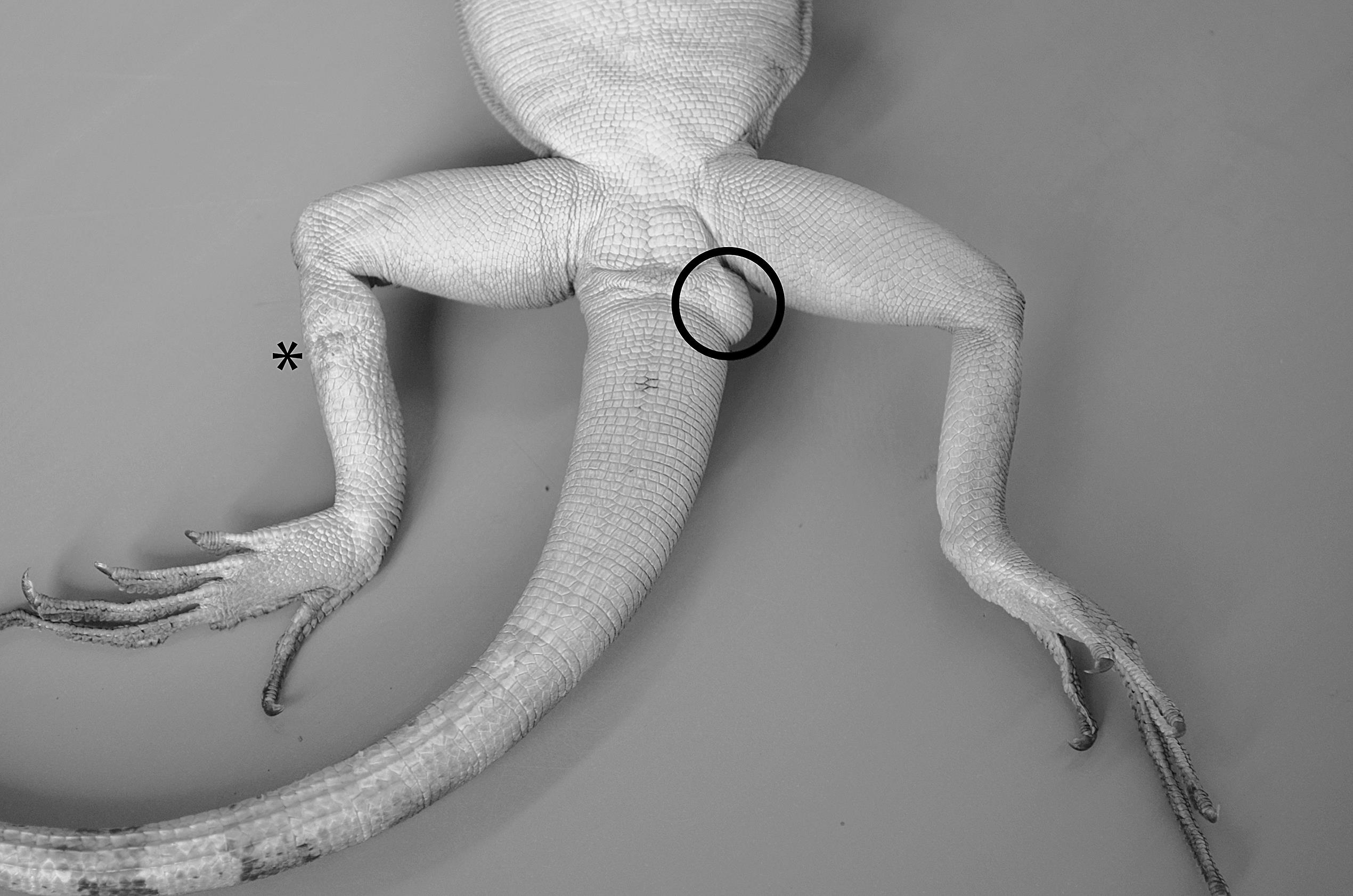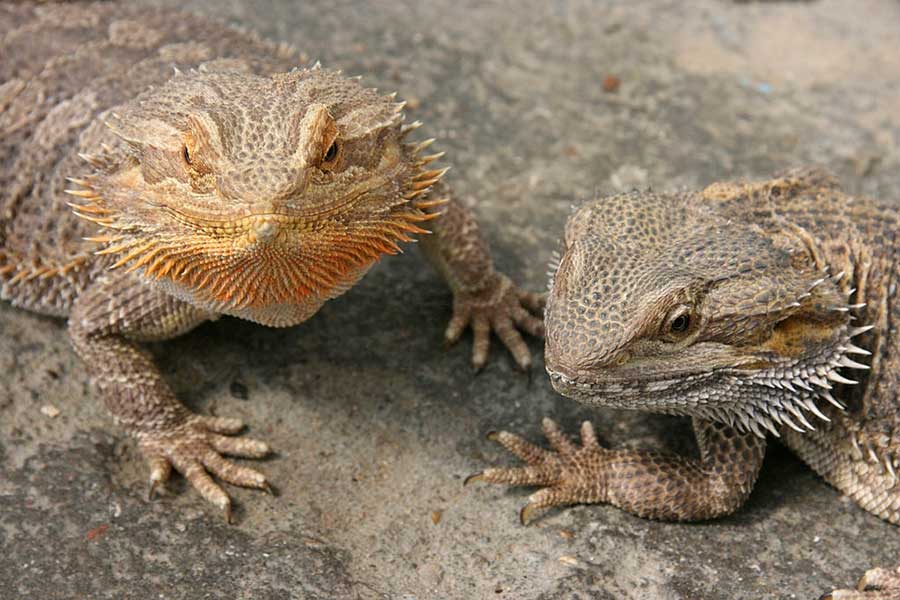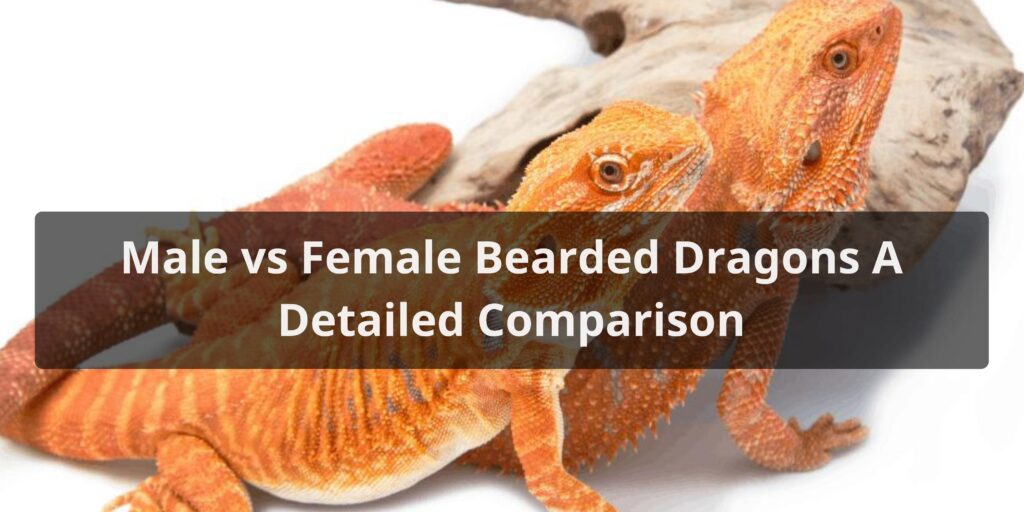Bearded dragons are becoming increasingly popular as pets. When getting a bearded dragon, one of the most common questions is whether to get a male or female. There are some key differences between male and female bearded dragons that potential owners should be aware of. This article provides a detailed comparison of male vs female bearded dragons to help you decide which is right for you.
Bearded dragons, also known as Pogona vitticeps, are lizards that originate from Australia. They get their name from the spiny projections under their throat that they can flare out to appear larger and more intimidating. Bearded dragons make great pets as they are generally docile, can be handled easily, and seem to enjoy human interaction. They also come in a variety of beautiful colors and patterns.
When getting a pet bearded dragon, one of the first decisions you’ll need to make is whether you want a male or female. There are some distinct differences in temperament, size, and behavior between the two that are worth considering. This article will take an in-depth look at those differences to help you determine if a male or female bearded dragon is the right choice.
Male vs Female Bearded Dragon: Key Differences

Size
One of the most noticeable differences between male and female bearded dragons is their size. Males typically grow larger than females, reaching lengths of 18-24 inches compared to 16-20 inches for females.
Males also tend to be stockier, with larger heads and necks. Their size and build help support their dominance displays used for competing with other males. Females have a more petite and slender build. So if you want a large, impressive looking bearded dragon, a male may be the better choice.
Temperament
There are some general temperament differences between male and female bearded dragons. Females tend to be more laidback and docile. They often enjoy being held and handled. Males can be more high-strung, especially during breeding seasons. They may puff out their beard more often and can be somewhat territorial.
However, temperament ultimately comes down to the individual dragon. With regular gentle handling when young, even male bearded dragons can become quite tame and personable. Females may also show some feisty behavior during breeding season. But in general, females have a reputation for being slightly more relaxed.
Aggression
Male bearded dragons are usually more aggressive than females, particularly towards other males. This is due to their innate drive to compete for territory and mates. Two males housed together will almost certainly fight, sometimes to the death.
Females can also show some aggression, especially towards other females when defending territory or food. But they are not usually as fiercely competitive as males.
So if housing bearded dragons together, a male and female pair can work. But never house two males together. And be prepared to separate multiple females if there are signs of building aggression.
Breeding and Egg Laying
The main biological difference between males and females is that only females can lay eggs. Female bearded dragons reach sexual maturity and start reproducing around 12-18 months of age. They will lay infertile eggs even without a male present, generally in clutches of 8-30 eggs. This natural egg laying behavior can happen up to 5 times per year.
If you want to breed bearded dragons, you will need a mature male and female. Breeding requires introducing the pair during mating seasons and providing proper egg laying sites. Be prepared to house and care for any potential babies that may hatch.
While egg laying is part of the female reproductive cycle, it can take a toll in terms of nutrition and energy. So female dragons may need additional calcium and food support. Males do not have the burden of egg laying.
Behavioral Differences
In addition to size and temperament differences, male and female bearded dragons exhibit some different behaviors, especially related to dominance and mating.
Male bearded dragons are very territorial. They use behaviors like head bobbing, arm waving, and beard puffing to show dominance and claim territory from other males. Females do not generally show these behaviors outside of mating contexts.
Females submit more readily to handling whereas males may be more defensive of their space. But during breeding season, males can become very gentle and docile when interacting with females to avoid conflict and win their favor.
So male and female bearded dragon behavior depends partly on whether breeding is involved. But males tend to show more dominant territorial actions overall.
Caring for Male vs Female Bearded Dragons
While their basic care requirements are similar, some aspects of caring for male vs female bearded dragons differ:
- Housing: Males may be housed alone due to their territoriality and aggression towards other males. Females can potentially be housed together or with a male, but separate if there are signs of aggression.
- Space: Allow more space for males. A 75+ gallon tank is recommended for an adult male. Females can be comfortable in a 50-60 gallon tank.
- Handling: Handle young dragons of both sexes frequently to socialize them. Males may become more defensive of territory as they mature.
- Diet: Provide extra calcium for adult female dragons, especially when egg laying. Males and females both need balanced diets high in insects and vegetables.
- Lighting Heating: Strong UVB lighting and basking heat are essential. Ensure the tank is warm enough for proper digestion. No differences based on sex.
- Accessories: Include basking/hiding spots and humidity hide. Males enjoy climbing branches and perches for territorial displays.
Which is Better – Male or Female Bearded Dragon?

So when choosing a pet bearded dragon, should you get a male or female? There are good reasons for selecting either one:
- Males are a better choice if you want a larger dragon and don’t need to house dragons together. Males are more territorial but interact well with their owners. They put on impressive dominant displays.
- Females tend to be slightly calmer. They can potentially be kept together or with a compatible male. Females don’t grow quite as large and won’t show territorial male behaviors.
Ultimately there are great individual dragons of both sexes. Consider the differences in size, temperament, and housing limitations. Then choose the bearded dragon that best fits your lifestyle and preferences in a pet. With regular gentle handling, both males and females can become docile, personable companions.
Conclusion
When deciding between a male or female bearded dragon, there are definite points of comparison in terms of size, aggression, breeding behaviors, and general temperament. Keep these key differences in mind, and choose the sex that best suits your needs and expectations for a pet dragon. Be prepared to provide appropriate housing, nutrition, and handling for your chosen sex. Both male and female bearded dragons can make delightful pets with their own particular quirks and qualities when properly cared for.
FAQs About Male vs Female Bearded Dragon
What are the key physical differences between male and female bearded dragons?
Male bearded dragons tend to be larger, have broader heads, and exhibit more vibrant colors. Females, on the other hand, are usually smaller with narrower heads. A notable difference is the presence of hemipenal bulges at the base of the tail in males.
Are there any specific care considerations for male vs. female bearded dragons?
Both genders require similar care. Ensure a proper diet, appropriate lighting, and temperature gradients. However, females may need extra calcium supplementation during egg-laying periods.
Can both male and female bearded dragons be kept together in the same enclosure?
It’s not recommended to house multiple adult bearded dragons in the same enclosure, as they can become territorial and aggressive. It’s safer to keep them separately to prevent conflicts and injuries.
Are there any health concerns or risks associated with owning male or female bearded dragons?
Both genders can be susceptible to similar health issues, such as metabolic bone disease or respiratory infections. Regular vet check-ups, proper diet, and habitat maintenance are essential for their well-being.
How do I breed bearded dragons, and what should I know about their reproduction?
Breeding requires careful preparation, including providing a suitable nesting area for the female. After mating, females lay eggs which need specific incubation conditions. Research and consult with experienced breeders for detailed guidance.
Are there any differences in the coloration or patterns between male and female bearded dragons?
In most cases, there are no gender-specific differences in coloration or patterns. Both male and female bearded dragons can display a wide variety of colors and patterns, which are influenced by genetics and individual variation.
What should I consider when choosing a male or female bearded dragon as a pet?
When choosing a pet bearded dragon, focus on their health, temperament, and compatibility with your care routine rather than gender. Consider factors like age, activity level, and how well they adapt to handling to ensure a suitable and enjoyable companion.



